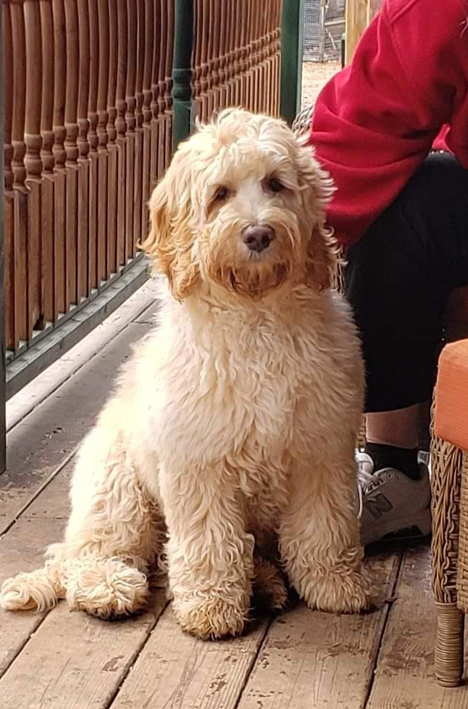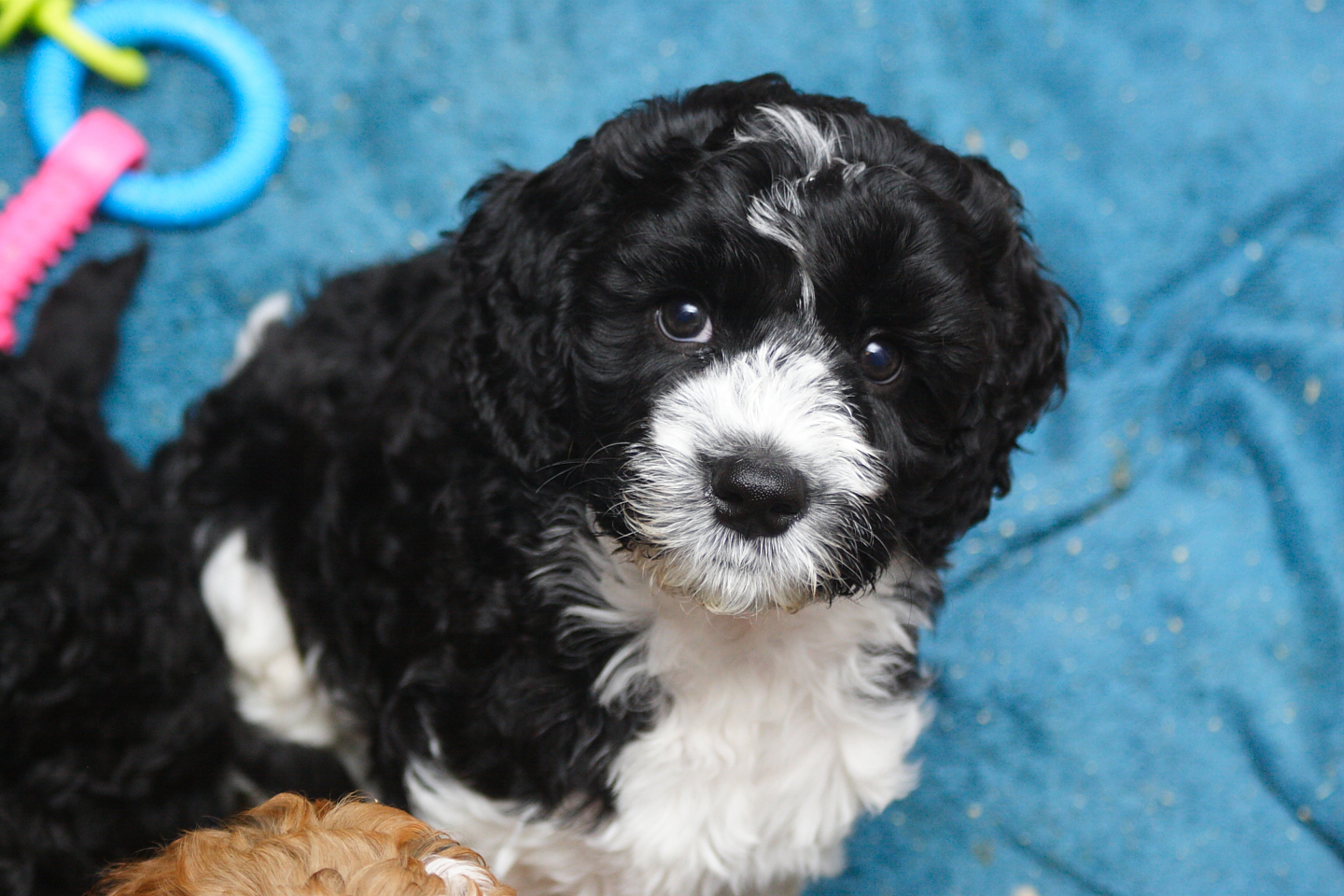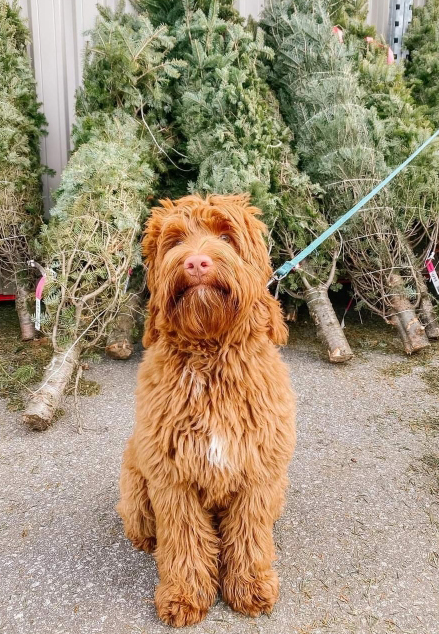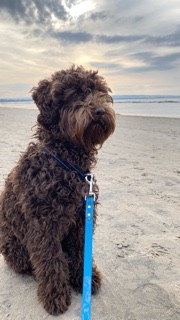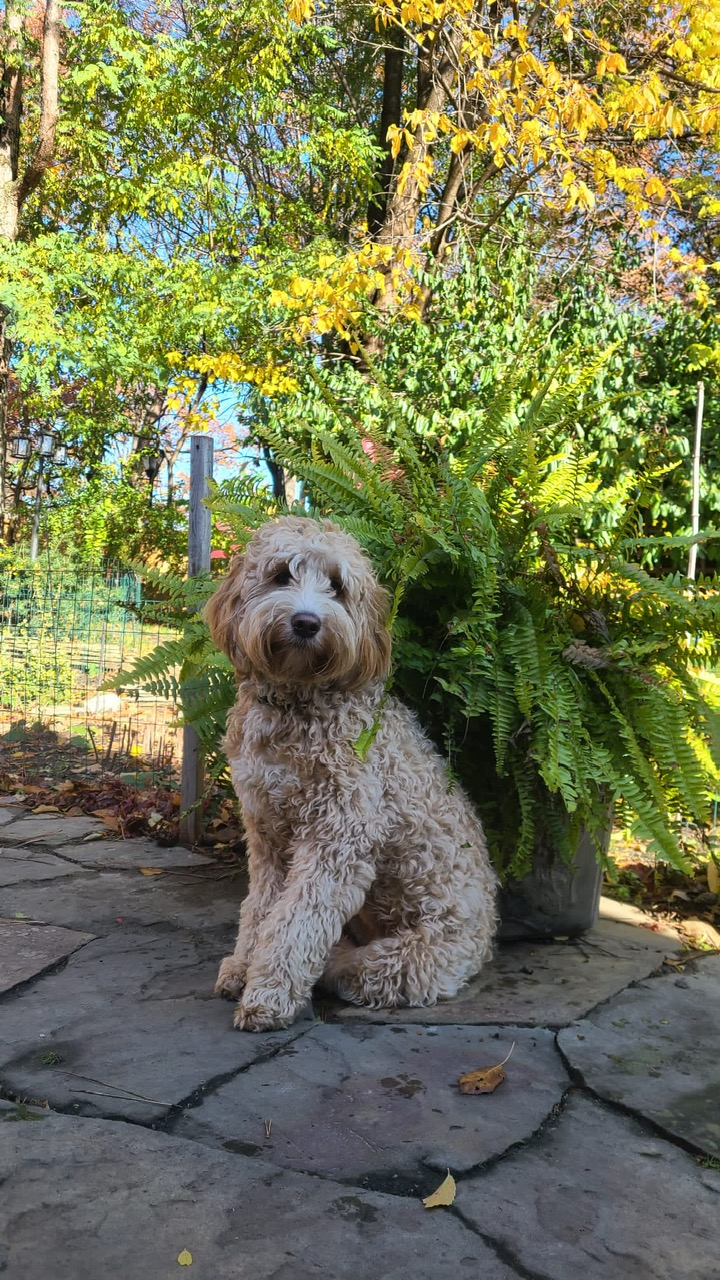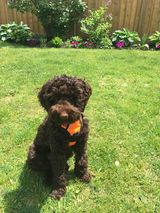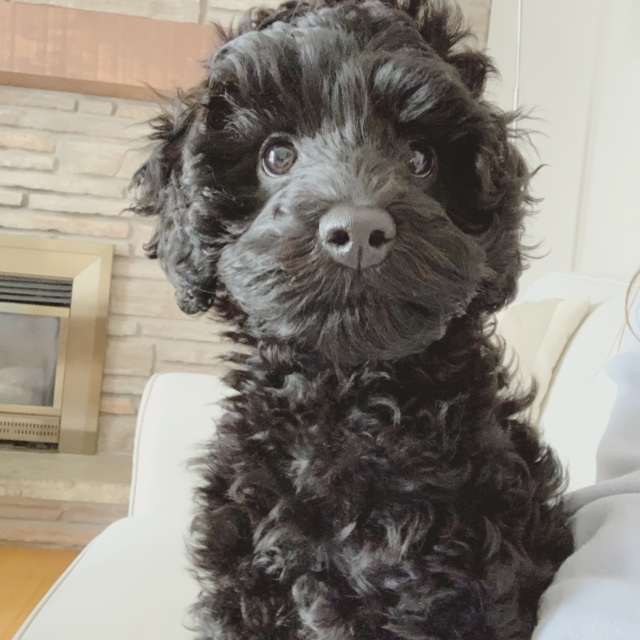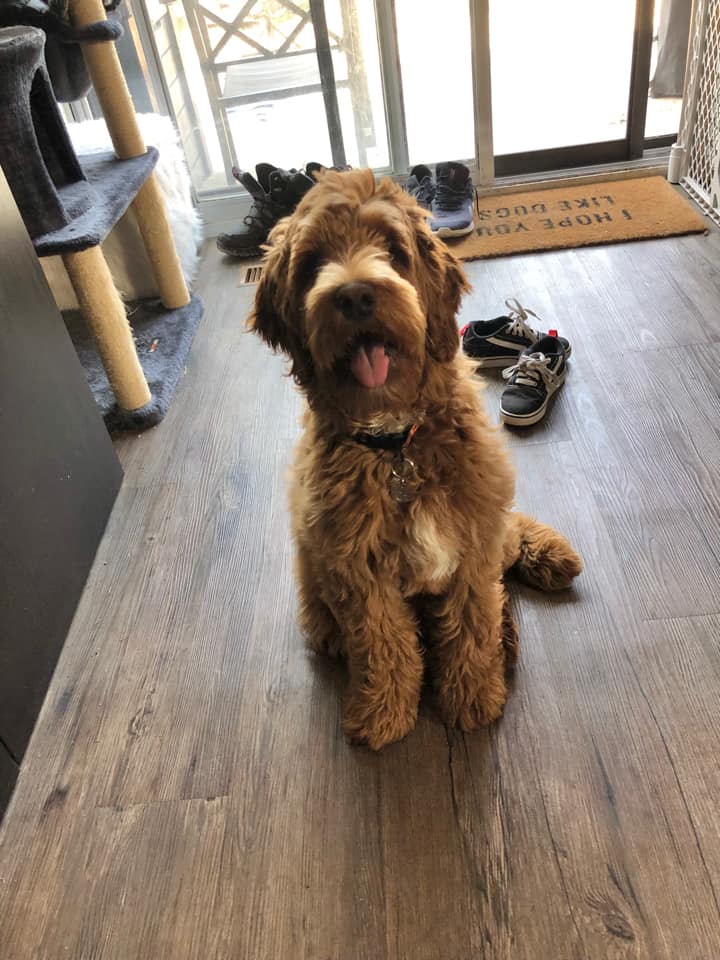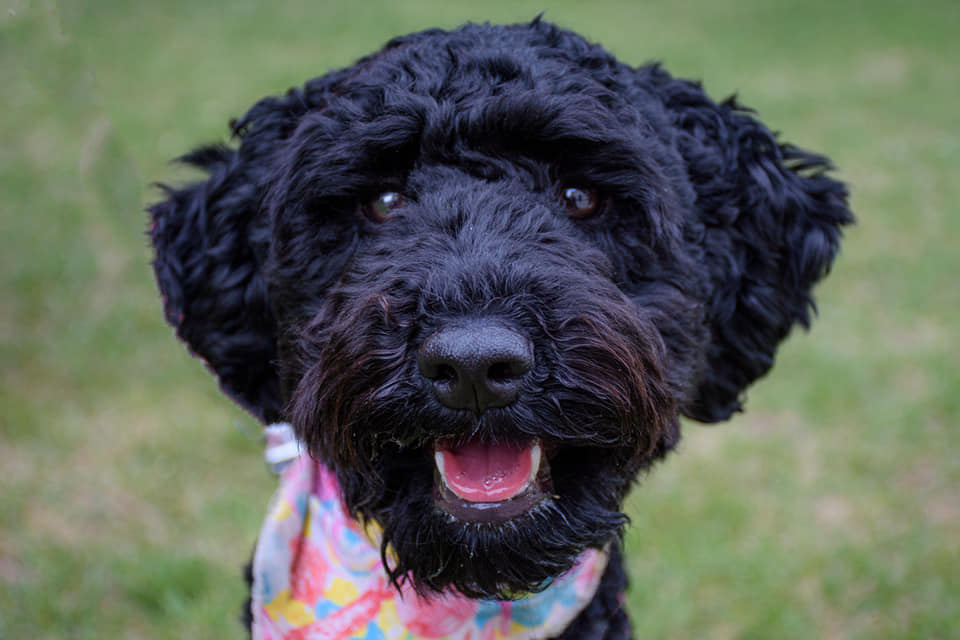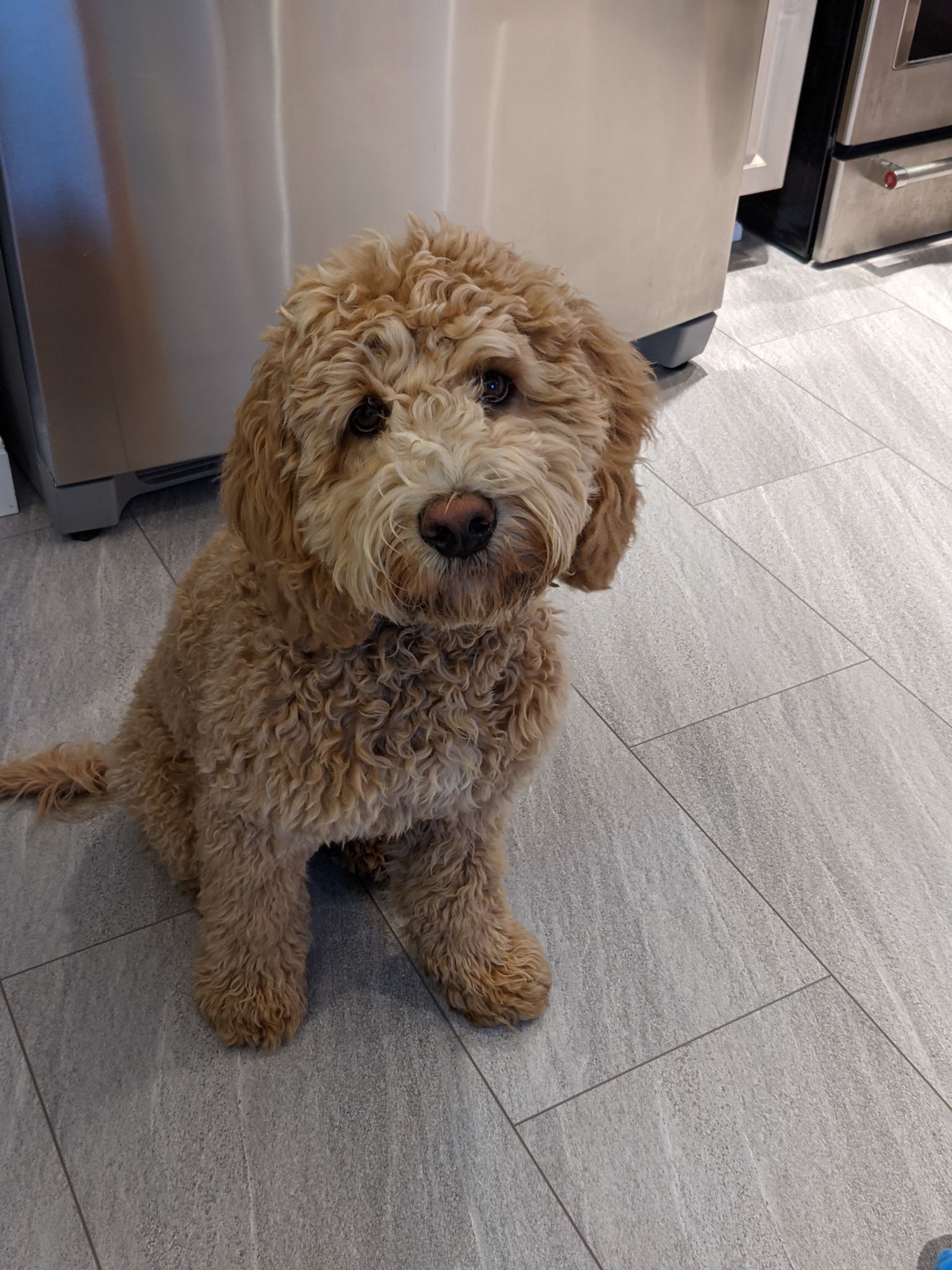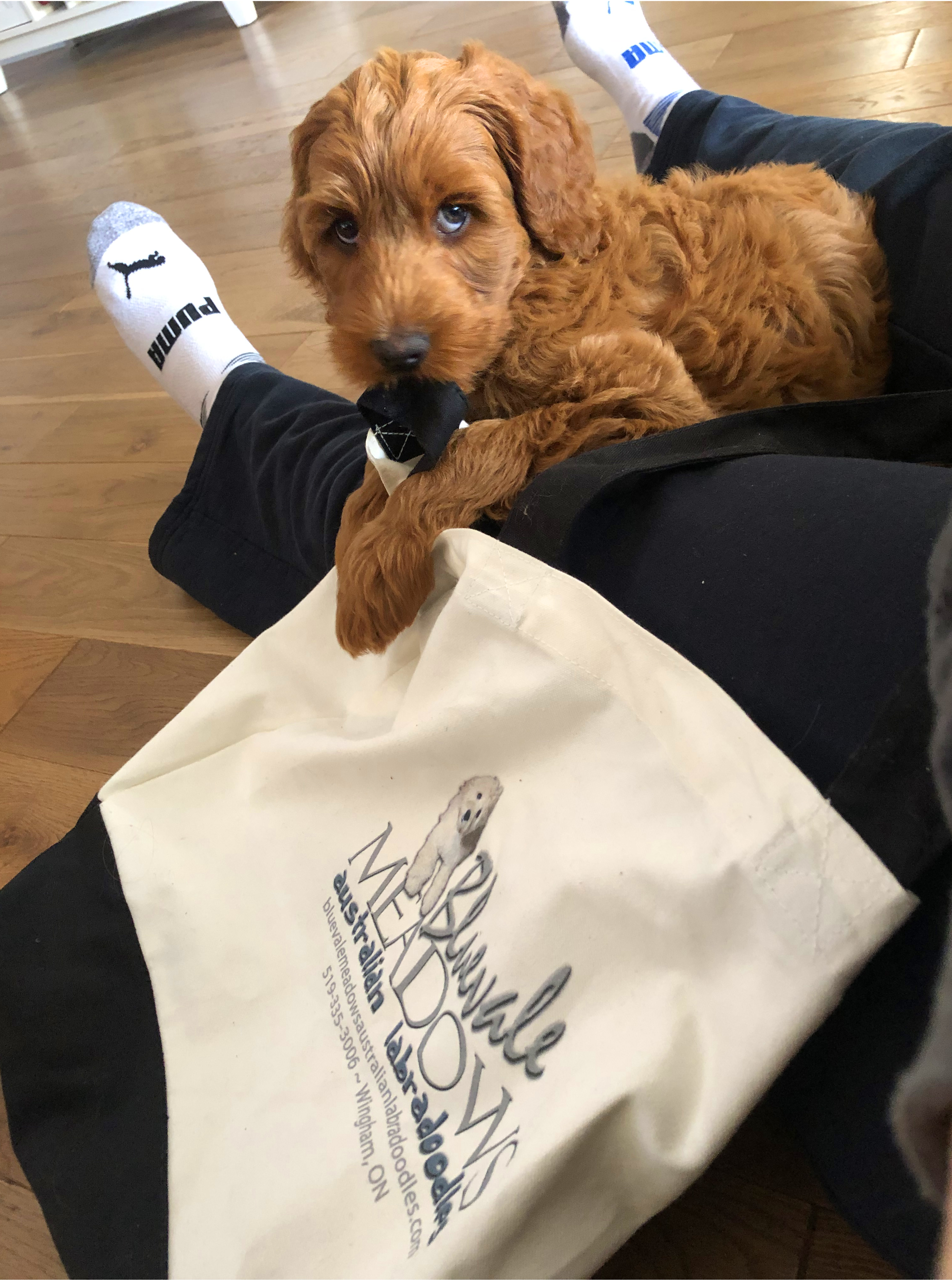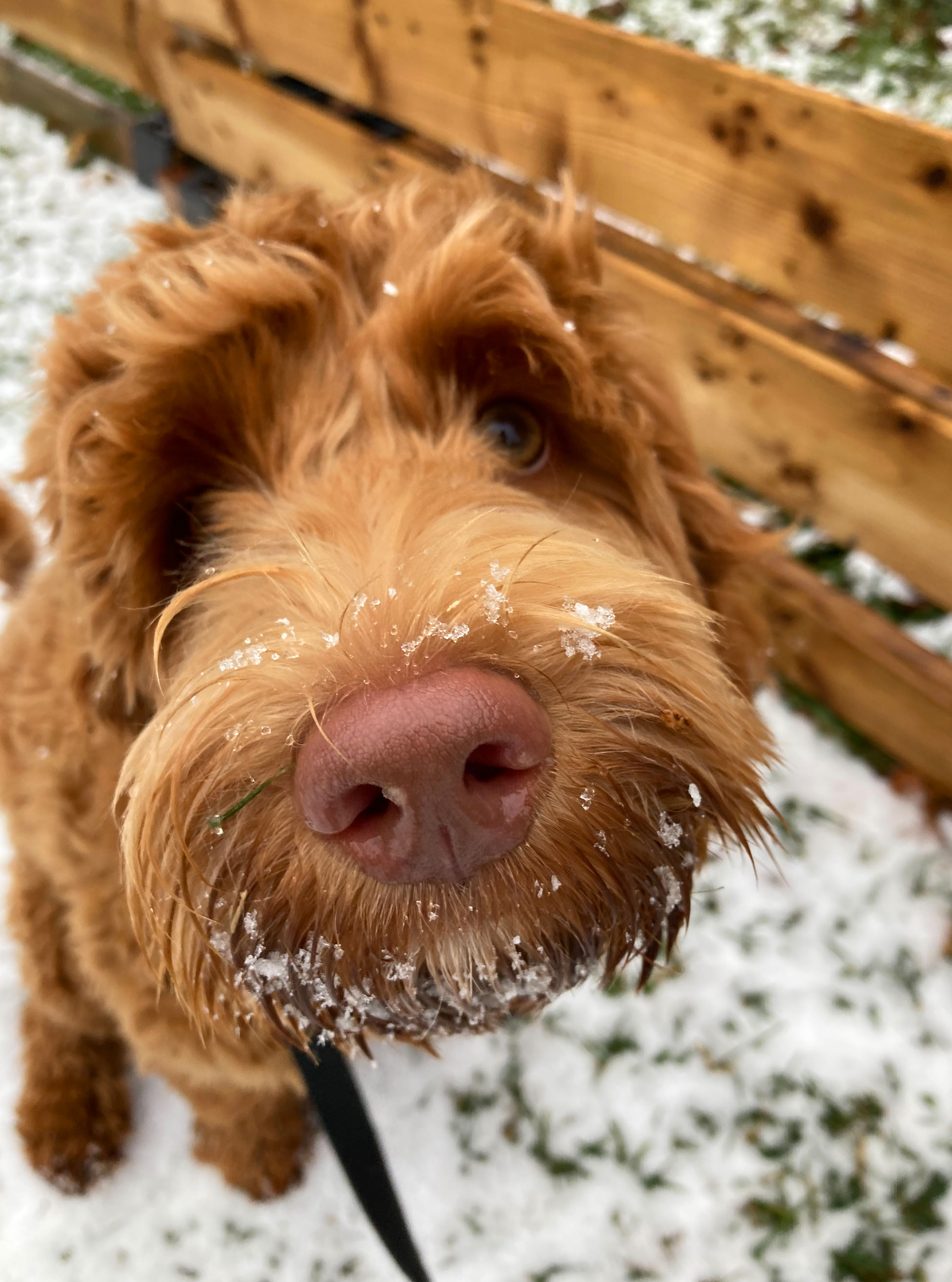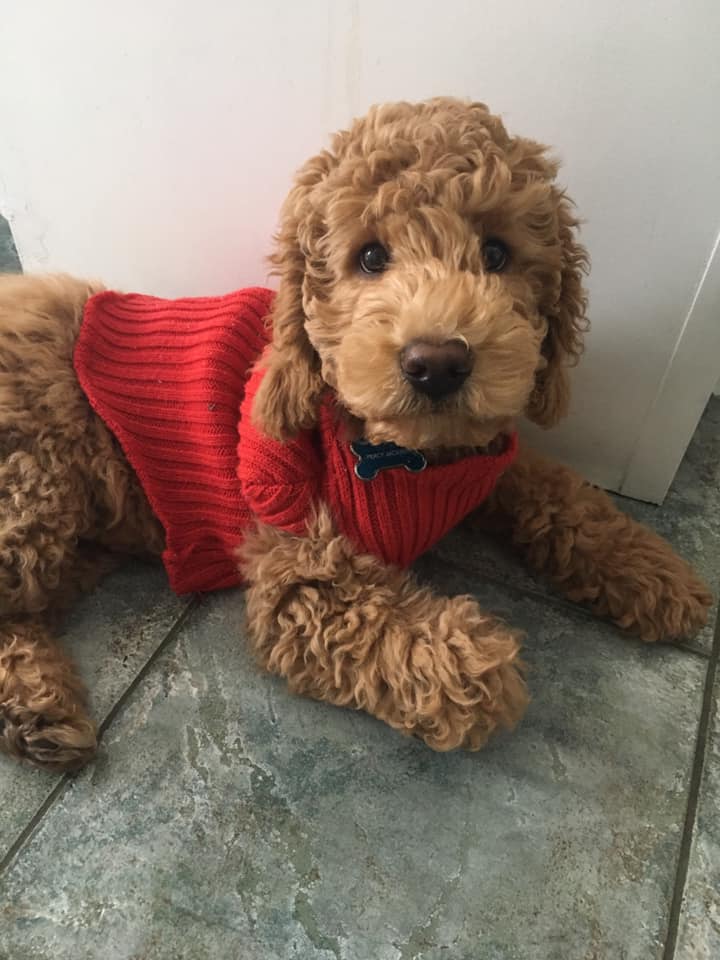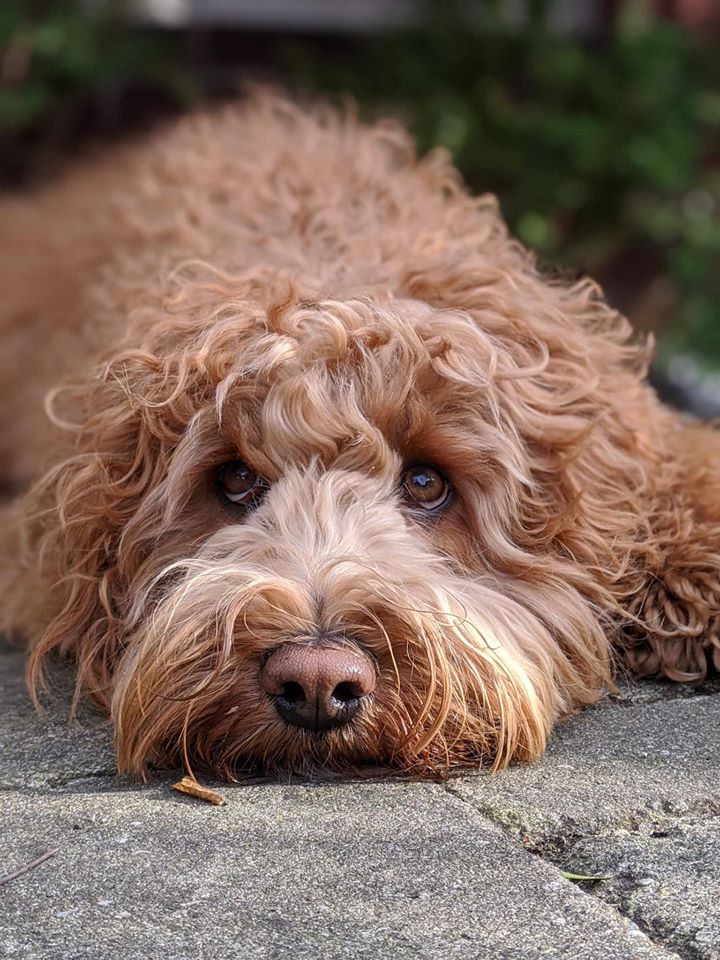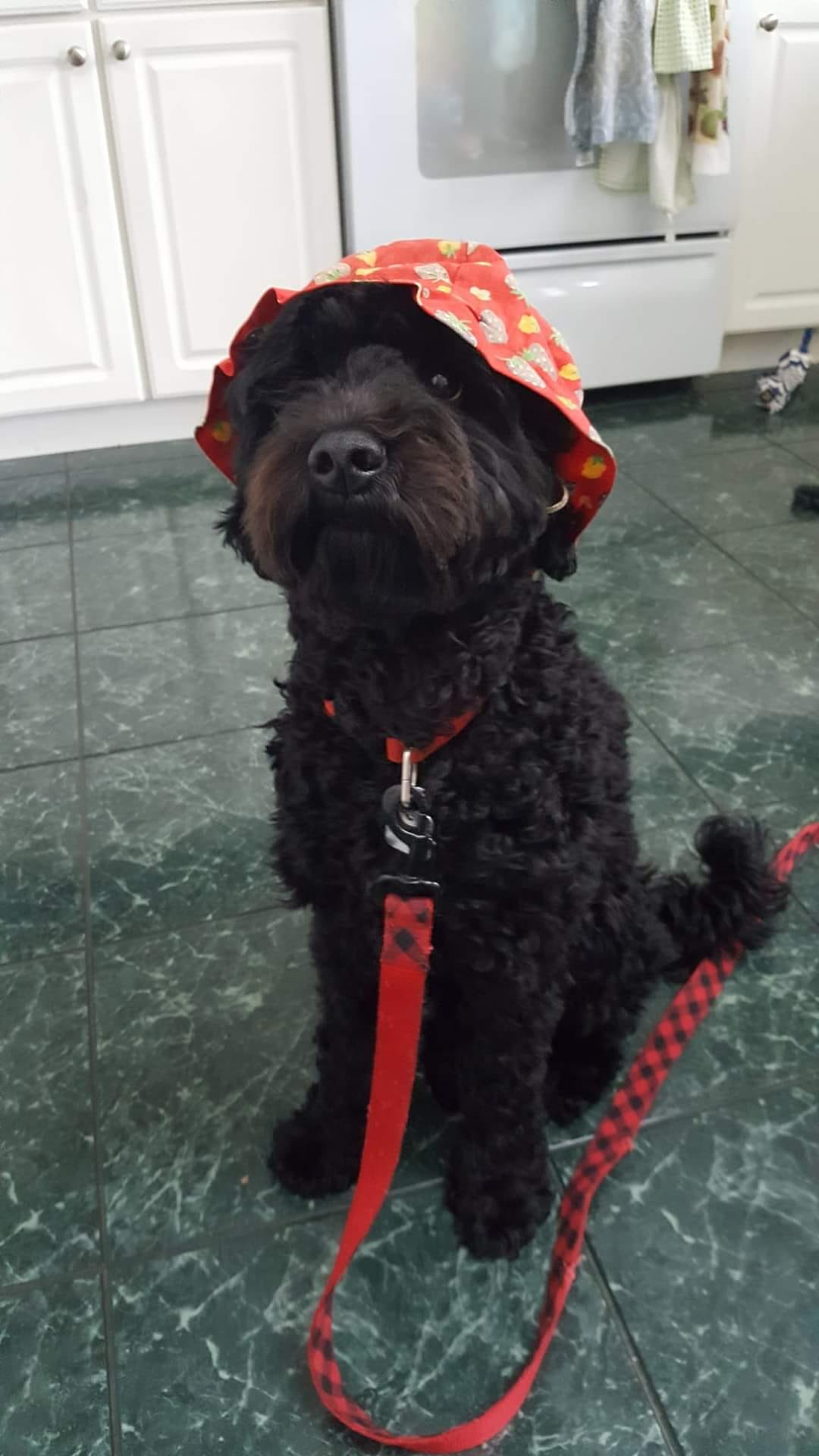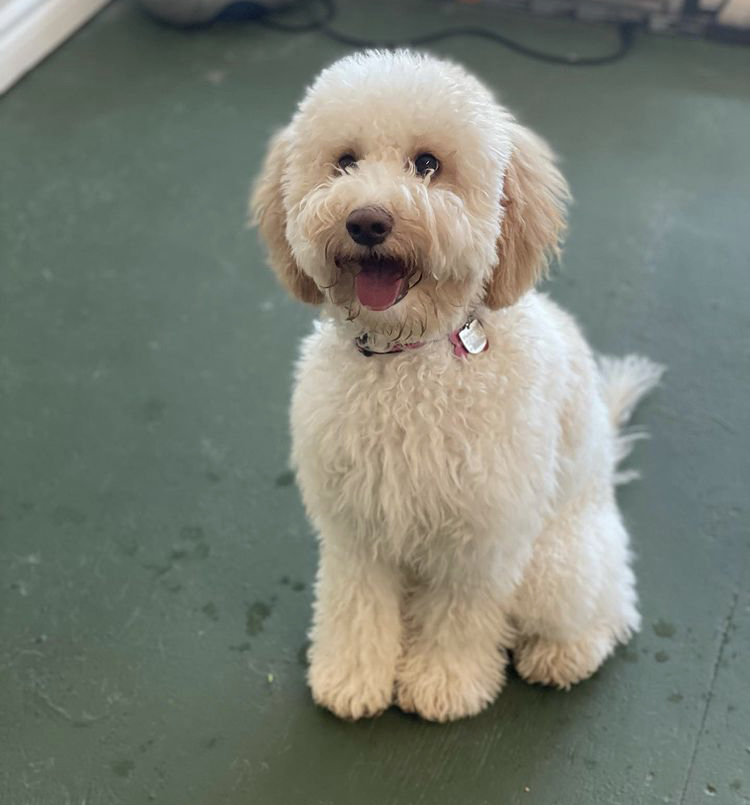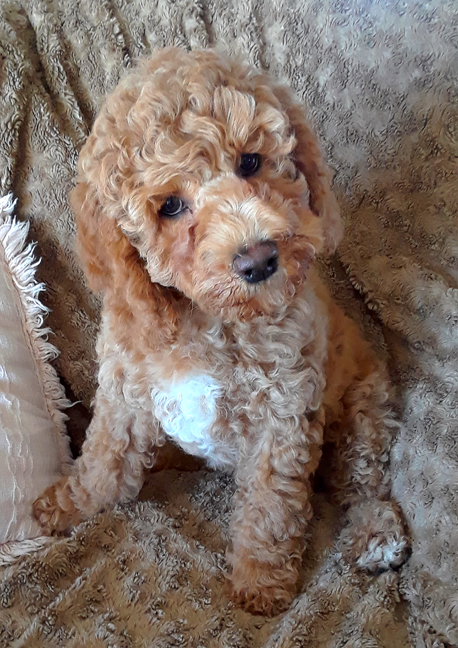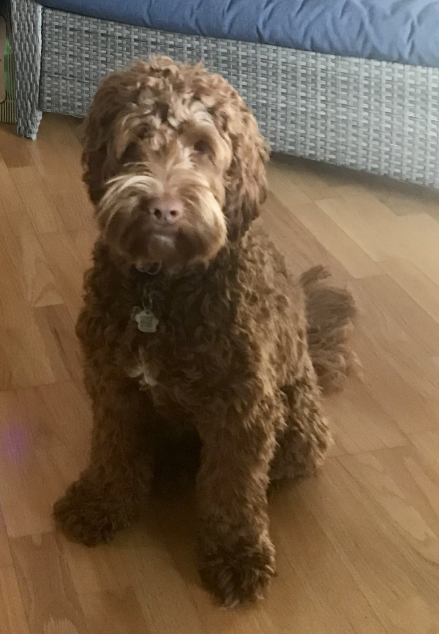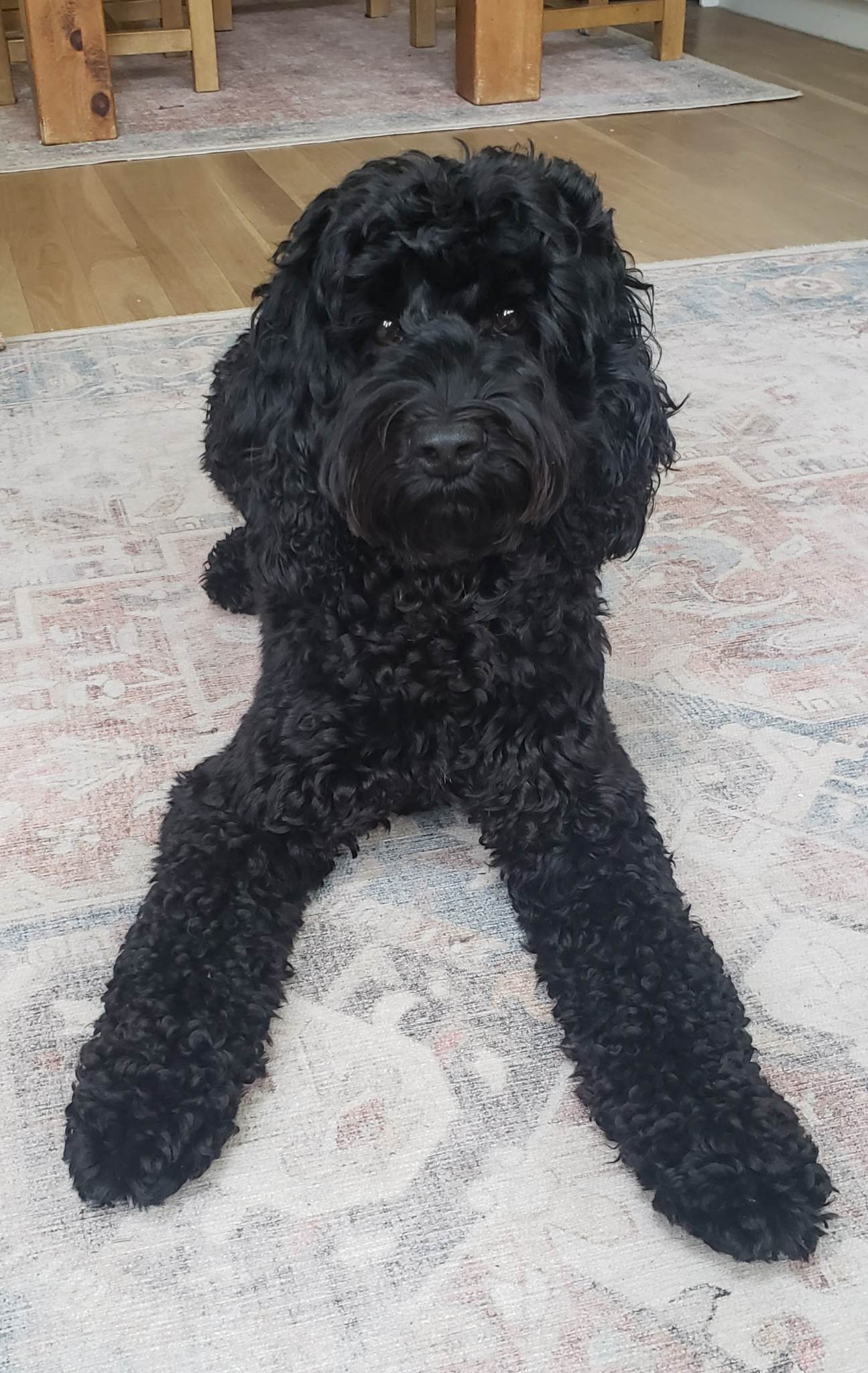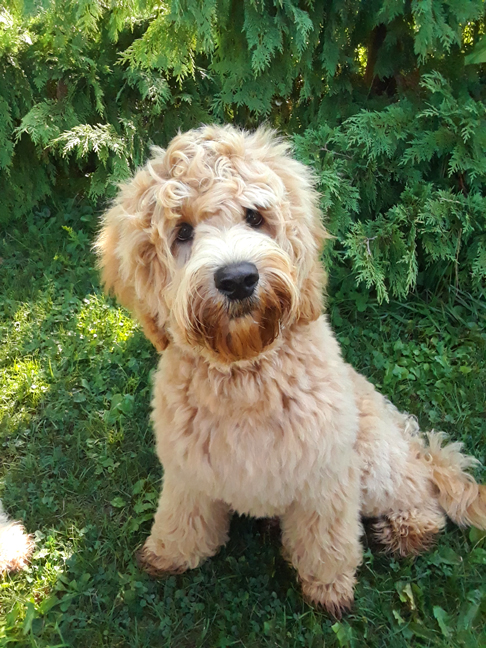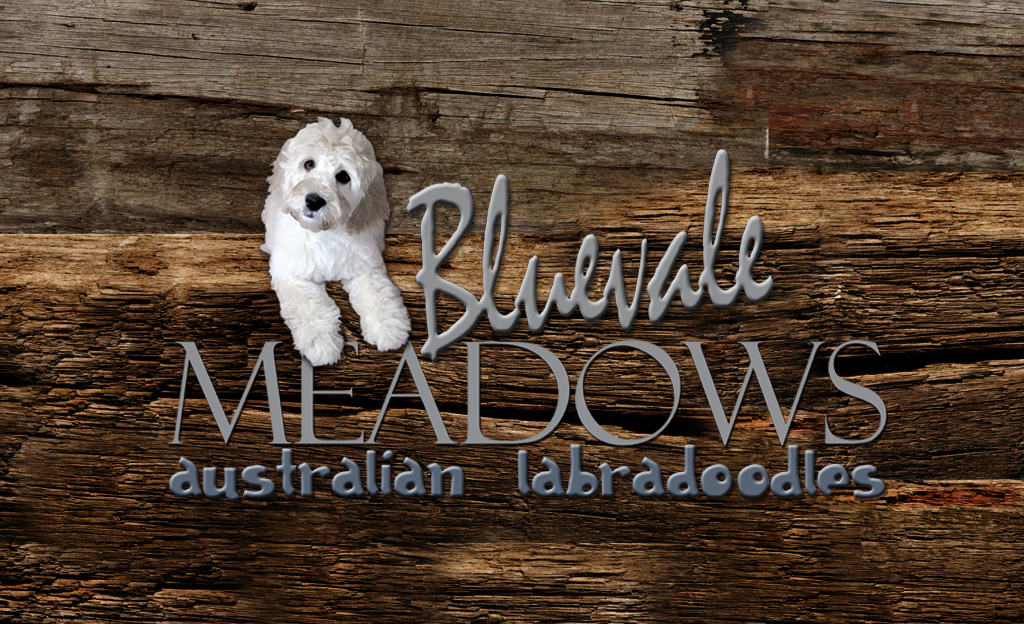

~ Located Near Wingham, On ~
Australian Labradoodles are known for their gentle nature, intuitive temperaments, and allergy‑friendly coats — but there’s a lot of confusion out there about what they actually are. This page is meant to help you understand the breed’s origins, what makes them different from other doodles, and why families around the world fall in love with them. At Bluevale Meadows, we raise Authentic Australian Labradoodles, recognized as a purebreed‑in‑development through the ALCA, with the calm, connected, people‑focused temperaments the breed is cherished for.
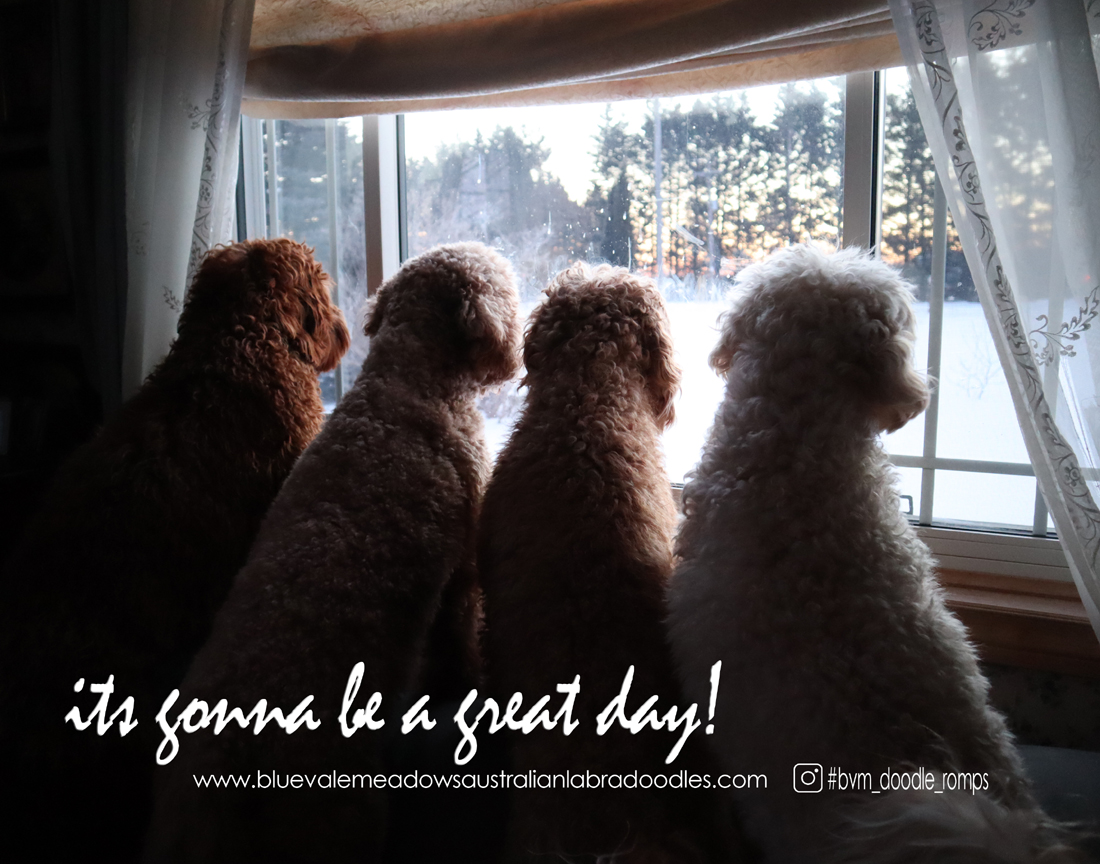
One of the biggest misconceptions about the Australian Labradoodle is that they’re part Australian Shepherd. They’re not — not even a little bit. An Aussiedoodle is an entirely different cross (Australian Shepherd × Poodle), with a very different temperament and purpose. The only reason “Australian” appears in the name Australian Labradoodle is because the breed was developed in Australia, not because it contains any herding breeds.
Australian Labradoodles were intentionally created for service and therapy work, which is why their temperaments are so intuitive, people‑focused, and steady. They were never meant to be high‑drive herding dogs, and they don’t carry the traits that come with those breeds. This distinction matters, especially for families looking for a calm, allergy‑friendly companion with a soft, connected nature.
The Australian Labradoodle has a thoughtful and intentional history, and it’s quite different from the story behind most “doodle” mixes today. This breed wasn’t created for trends or appearance — it was developed with purpose, structure, and a focus on service and therapy work. Understanding where they came from helps explain why their temperaments are so steady, intuitive, and people‑focused.
In the mid‑1970s, the Australian Guide Dog Association received a request from a woman in Hawaii who needed a guide dog that wouldn’t trigger her allergies. Their Labradors were proven working dogs, but they needed a non‑shedding partner to cross with — which led them to the Standard Poodle. Under the guidance of Wally Conran, the first “Labrador‑Poodle” litter was born, and the Labradoodle name came with it.
These early crosses showed promise, but they weren’t yet consistent. Coat types varied, and the allergy‑friendly traits weren’t guaranteed. Still, the idea sparked interest, and forward‑thinking breeders in Australia began to refine the concept with a long‑term vision in mind.
As the breed continued to evolve, two major Australian breeding programs — Tegan Park and Rutland Manor — began refining the early Lab × Poodle crosses with a clear purpose: to create a reliable, allergy‑friendly companion with a gentle, intuitive temperament. Over time, they introduced carefully selected lines from the Cocker Spaniel (American and English), which helped improve coat quality, size consistency, and the soft, people‑focused nature the breed is known for today.
These dogs were then bred to each other over many generations, forming the foundation of what is now recognized as the Authentic Australian Labradoodle — a purebreed‑in‑development.
At Bluevale Meadows, we breed Authentic Australian Labradoodles and follow the ALCA’s breed standard and health testing guidelines to preserve the integrity and future recognition of the breed.
As the breed progressed, Rutland Manor eventually sought formal recognition for her dogs through the MDBA (Master Dog Breeders & Associates). As part of that process, she was required to change the breed name — which is how the term Australian Cobberdog came to be. The Cobberdog shares the same early foundation as the Australian Labradoodle, but once the name changed, the development paths and registries began to diverge.
Outside Australia, breeders continued using the original name Australian Labradoodle, and the ALCA has continued refining the breed as a purebreed‑in‑development. The ALCA has explored recognition pathways as well, but chose not to pursue AKC recognition in order to protect the breed’s temperament, structure, and purpose. Their focus remains on preserving the original vision of a gentle, allergy‑friendly companion with strong therapy potential.
So while the Australian Labradoodle and the Australian Cobberdog share the same early roots, they have developed along different paths with different registries. At Bluevale Meadows, we continue the Authentic Australian Labradoodle line, following the ALCA’s breed standard and health testing guidelines to support the breed’s long‑term stability and future recognition.
Learn more about the ALCA’s breed standard at:
https://australianlabradoodleclub.com/about/
Today, the Australian Labradoodle is celebrated for its soft, allergy‑friendly coat, its intuitive and affectionate temperament, and its versatility. These dogs excel as family companions, therapy partners, emotional‑support dogs, and in some cases, even specialized service roles. Their gentle nature and eagerness to connect make them truly special.
It’s important to note that first‑generation doodles (like Lab × Poodle or Aussie × Poodle crosses) are not the same as the Authentic Australian Labradoodle. Without the purposeful development and carefully selected lines, they simply don’t carry the same consistency in coat, temperament, or structure.
There are two coat types in the Australian Labradoodle that are considered allergy‑friendly. The first is the Fleece coat, which comes in two variations — wavy fleece and curly fleece. Both are soft, silky, and non‑shedding to very low‑shedding. Then there is the Wool coat, which has a definite dense, woolly feel and is often quite curly — thick, luxurious, and still allergy‑friendly.
At Bluevale Meadows, we focus mainly on producing fleece coats, as they offer that classic Australian Labradoodle look and feel. Every now and then, some of our lines will still produce a rare wool coat.
Authentic Australian Labradoodles come in two coat types: fleece and wool. Both are allergy‑friendly, non‑shedding to very low‑shedding, and soft to the touch, but they differ slightly in texture and appearance.
Fleece Coat
-Soft, silky, and flowing
-Can be wavy or have loose curls
-The most common coat in the breed
-Non‑shedding to very low‑shedding
-You’ll typically only see hair during brushing or grooming
-Easy to maintain with regular brushing
-The coat type most families picture when they think “Australian Labradoodle”
Wool Coat
-Tighter curls, similar to a lamb’s fleece
-Non‑shedding to very low‑shedding
-Excellent for families with more sensitive allergies
-Requires consistent grooming to prevent matting
At Bluevale Meadows, we focus on producing fleece coats, as they offer the perfect balance of softness, non‑shedding to very low‑shedding coat quality, and easy maintenance for most families, though some of our lines still produce the occasional wool coat
Australian Labradoodles come in quite a variety of colours today — everything from black, caramel, and cream, to reds, apricot, chocolate, and parti. It’s one of the things that makes the breed so fun and expressive.
Here at Bluevale Meadows, we tend to produce many puppies in the apricot spectrum. This includes all the warm shades of red, from lighter creams through caramels and chocolates. These colours age beautifully and stay soft and warm as the dog matures.
We also see some lovely café coats in our program. Our chocolate sire is actually a café himself, and some of his puppies may inherit that same colouring. As these coats mature, they often take on a gentle, silvery shimmer that makes the colour even more unique.
Australian Labradoodles come in three sizes: Mini, Medium, and Standard. While genetics give us a reliable range, every puppy is an individual, and final size can vary slightly depending on structure, nutrition, and growth patterns. Our lines tend to mature consistently within their expected ranges, and we’re always happy to help families choose the size that best fits their lifestyle.
Authentic Australian Labradoodles come in two coat types: fleece and wool. Both are allergy‑friendly, non‑shedding to very low‑shedding, and soft to the touch, but they differ slightly in texture and appearance.
Minis typically mature around 14–16 inches and 15–25 lbs. They’re compact but sturdy — the perfect size for families who want a smaller companion without losing that classic Australian Labradoodle presence. Easy to lift, easy to travel with, and wonderfully adaptable to smaller homes or quieter lifestyles.
Mediums usually land around 17–20 inches and 25–40 lbs, and they’re our most popular size for a reason. They feel balanced and versatile — big enough for adventures and family life, but still easy to manage day‑to‑day. For many families, the Medium is the “just right” size.
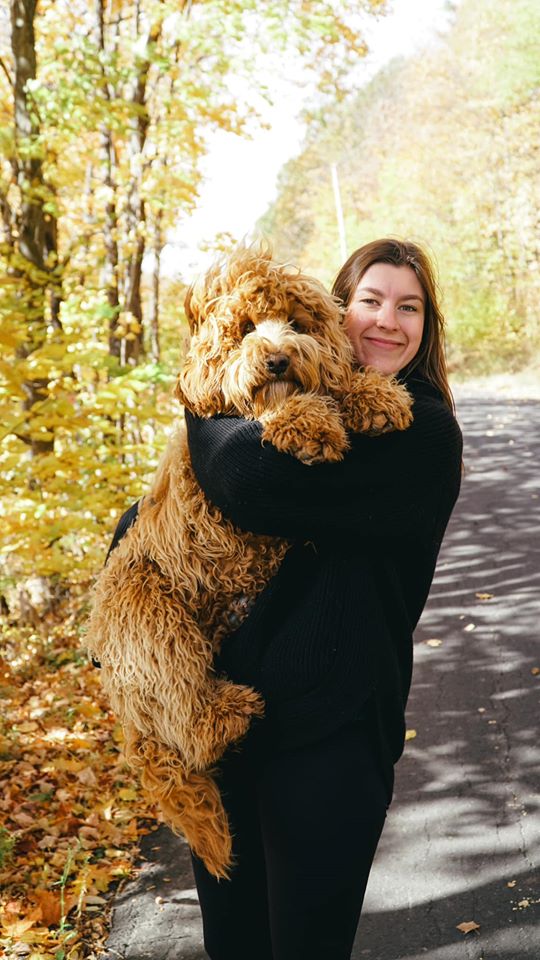
We occasionally produce small standards — dogs who mature around 21–23 inches and 40–50 lbs. They’re a wonderful fit for families who want a little more dog without stepping into the very large full‑standard size. Full standards are not part of our program.
For comparison:
Full standards in the breed can reach 24–26 inches and 60–75 lbs, which is significantly larger than what we produce here at Bluevale Meadows.
Most of our puppies mature in the Medium range, which is the size our program is best known for — balanced, versatile, and a wonderful fit for most families. Because the Australian Labradoodle has natural overlap between size categories, some of our smaller lines produce what we lovingly call “large minis” or “small mediums,” often landing around 17–18 inches and 20–30 lbs. On the larger end, we occasionally see small standards, typically 21–23 inches and 40–50 lbs, offering a bit more size without stepping into the much bigger full‑standard range. Full standards (24–26 inches and 60–75 lbs) are not part of our program. We use lineage, structure, and past litters to guide size expectations, and we’re always happy to help families understand what to expect as their puppy grows.
Here is a small collection of puppy photos kindly shared with us by our families over the years.
